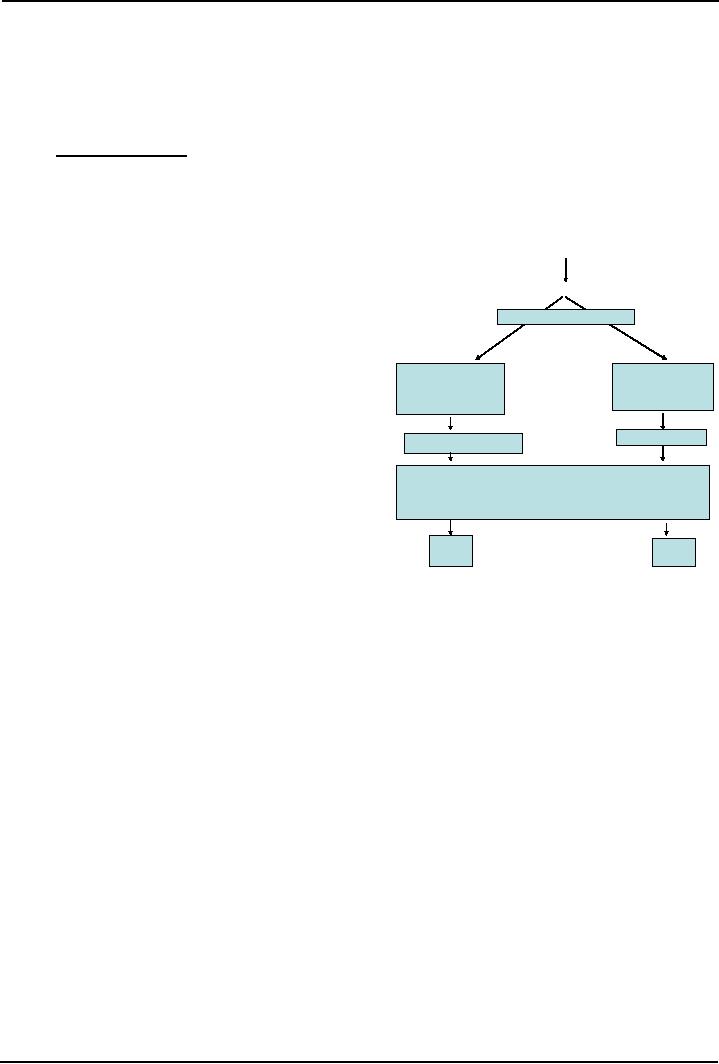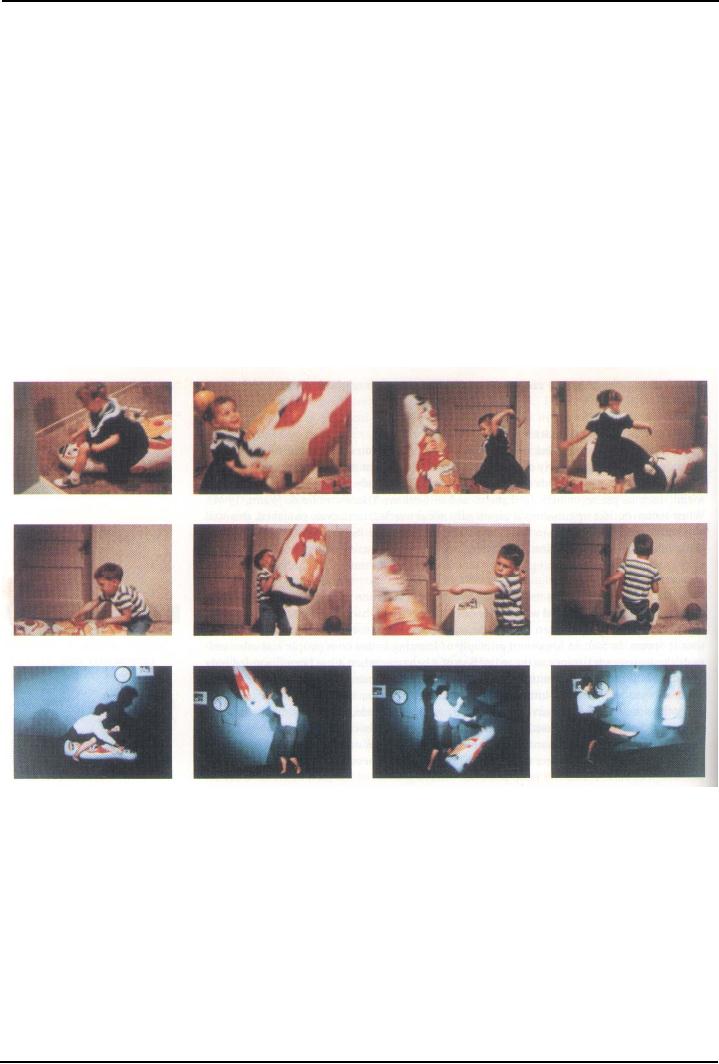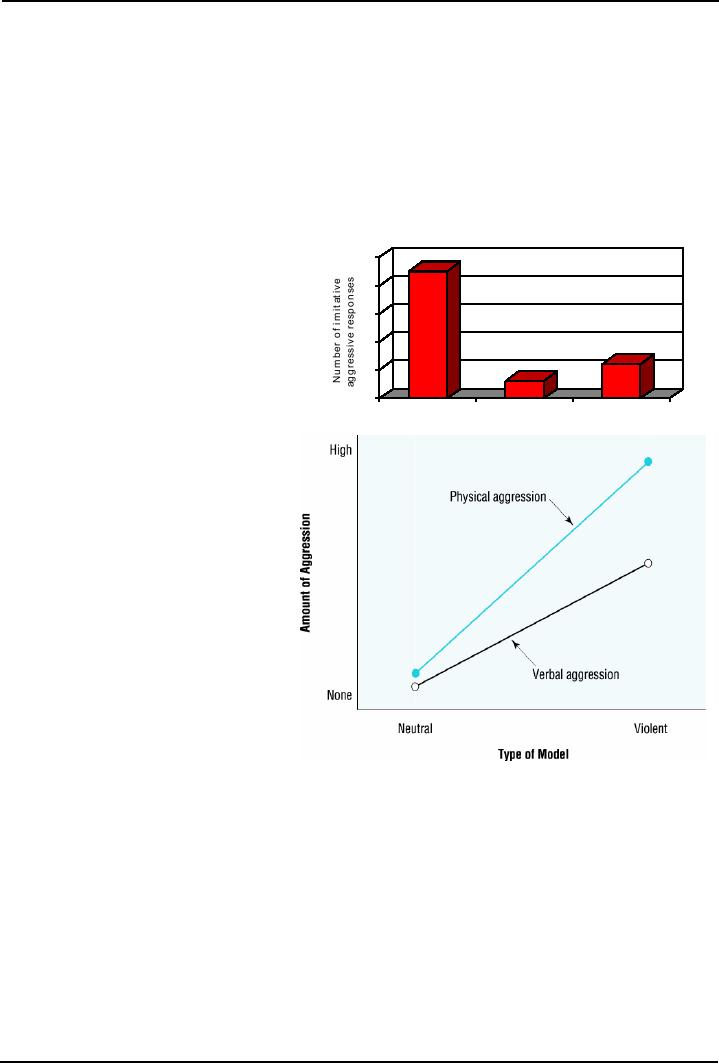 |
AGGRESSION (CONTINUE……):The Cognitive-Neo-associationist Model |
| << AGGRESSION:Identifying Aggression, Instrumental aggression |
| REDUCING AGGRESSION:Punishment, Incompatible response strategy >> |

Social
Psychology (PSY403)
VU
Lesson
35
AGGRESSION
(CONTINUE......)
Aims
·
To
introduce psychological aspects of
antisocial (aggressive) behavior
Objectives
·
Describe
cathartic hypothesis of aggression
·
Describe
the Cognitive-Neo-associationist Model of
aggression
·
Discuss
situational factors involved in
aggressive behaviors
·
Describe
learning theory of
aggression
Implications
of cathartic hypothesis and
aggression
·
It is
often believed that
catharsis reduces aggression.
However, the research literature
indicates that
once
verbal aggression begins, it is difficult
to keep it within manageable
bounds.
·
People
who are given the
opportunity to aggress directly against
someone who has frustrated
them
often
become more aggressive. In contrast,
households that engage in
little or no verbal
aggression
rarely
ever experience physical violence
(less than half of 1 percent;
Buss, 1966; Gecn,
1968).
·
Despite
the lack of research support for
catharsis, the popular media and many
mental health
professionals
continue to advocate its
use.
·
Sociologist
Murray Straus's research indicates
that this sort of escalation of
aggression is a
common
pattern in domestic violence.
·
Family
conflicts often begin with
verbal quarreling, which
then escalates to screaming and
yelling,
and
finally to physical aggression
(Straus & Gelles,
1990).
The
Cognitive-Neo-associationist
Model
Realizing
that the association between frustration
and aggression had been overstated,
Leonard Berkowitz
(1969,
1989) developed a new
theory. He asserted that
frustration is just one of many factors
that can
stimulate
negative affect. Besides
frustration, other aversive factors
such as pain, extreme temperatures,
and
encountering
disliked people can also
cause negative affect. All
negative events are
associated in a network
in
memory. Leonard Berkowitz
explains how hostile
aggression is often triggered by
circumstances that
arouse
negative feelings:
·
Cognitive-associative
networks:
o
Negative
affect is encoded into
memory and becomes
cognitively associated with
specific
types
of negative thoughts, emotions,
physiological responses, and reflexive
behaviors.
·
Initial
"fight" or "flight"
tendencies:
o
Whether
we react to negative affect
with "fight" or "flight"
depends on our:
genetic
predispositions
prior
conditioning and learning
attention
to aspects of the situation that
facilitate or inhibit
aggression
o
An
aversive event initially activates
not one but two different
networks:
impulsive
aggression-related tendencies
impulsive
escape-related tendencies
143

Social
Psychology (PSY403)
VU
·
Unthinking"
aggressive responses:
o
Negative
affects and reflexive actions evoked in the
cognitive-associative networks at
this
stage
are primitive,
or rudimentary
·
Higher
order cognitive intervention:
o
Cognitive
control mechanisms become
active when we are self-aware and attend
to what
we
are thinking
·
Situational
factors
·
Heat
hypothesis
·
Triggers
of aggression
Discussion:
Anger, Catharsis and
Neo-
association
Theory
Aversive
event
The
text discusses the argument against
the
catharsis
hypothesis (the idea, derived
from Freud,
Negative
affect
that
indirectly expressing feelings of
hostility will
Lower
order cognition
reduce
subsequent aggression).
A
recent
experiment
also provides a nice
illustrative
argument
against the catharsis hypothesis and ties
into
ideas about mental control
discussed earlier in
Impulsive
aggression
Impulsive
escape
related
the
text. Bushman (2002) draws
on Berkowitz's
Related
tendencies
tendencies
(1993)
"cognitive neo-association theory"
of
aggression
for his prediction.
Cognitive neo-
Rudimentary
fear
Rudimentary
anger
association
theory suggests that
aggressive
thoughts
are linked together in an
associative
Higher
order cognitive intervention: through awareness
and self
network
in memory, so that thinking
about one
Regulation,
aggression- and fear-related tendencies
may be
modified
aggressive
act should prime other
aggressive
thoughts
and predispose aggressive actions.
To
test
the contrasting predictions offered by
the
Anger
Fear
catharsis
hypothesis and cognitive neo-association
theory,
Bushman angered his
participants (300 men and
300 women) by having them
write a one paragraph
essay
on their position on abortion and
having it ostensibly evaluated by another
participant. The
"other
participant's"
feedback rated the essay negatively
(about 9 on a 10 to +10
scale) and included the
handwritten
comment, "This is one of the worst essays
I've read!" Subsequent to
this, participants were
assigned
to one of three conditions: a rumination
condition, in which they punched a
punching bag while
thinking
about their opponent; a
distraction condition, in which
they punched a punching bag
while
thinking
about the benefits of physical fitness;
and a control condition, in
which they did not punch
a
punching
bag. The dependent variables were
participants' rated mood and their
aggression on a reaction-
time
task in which participants
competed with the "other
subject" to press a button
which would blast the
slower
person with noise; participants
could set the decibel level
of the punishing blast. Results
indicated
that
the rumination group was
significantly angrier than
either of the other groups, and was
also highest in
their
level of aggression. The
distraction group, who punched the bag
while thinking about fitness,
was
less
angry but was not
significantly
less aggressive than the
rumination group. These
results directly
contradict
the predictions of catharsis theory and
are in line with the
predictions of cognitive neo-
association
theory.
Situational
Factors: "Heat hypothesis"
·
Laboratory
experiments demonstrate that hot
temperatures increase hostile
thoughts and feelings
·
Archival
studies suggest that the
urban riots that erupted in
many American cites in the
1960s were
most
likely to occur on hot days and
then to diminish in intensity as the
weather cooled (Carlsmith
&
Anderson, 1979).
·
This
effect also occurs for
such aggressive behaviors as
murder, assault, rape, and
spousal abuse
(Anderson
& Anderson, 1984,1996);
144

Social
Psychology (PSY403)
VU
·
Pakistan:
general observation that people
are impatient and irritable
during hot summer
days.
Practical
implications
·
Frequency of
hostile outbursts could be reduced in
temperature-controlled
environments
·
Second,
the heat hypothesis has obvious
implications for global
warming
·
By
the middle of the twenty-first century,
we can expect global temperatures to
increase by two to
eight
degrees, which means there
will be many more hot days
in the summer months (U.S. House
of
Representatives, 1994).
·
Craig
Anderson (2001) estimates
that such temperature increases
could increase annual
serious and
deadly
assaults by more than 24,000
incidents in the US
Situational
Factors: Aggressive cues as
"triggers" of aggression
·
Berkowitz
believes that the presence of
aggression-associated cues in the
environment can' act
as
triggers
for hostile outbursts by making
aggressive thoughts more
accessible.
·
An
aggression-associated cue is anything
that is associated with
either violence or
unpleasantness,
such
as guns, knives, and clubs.
·
The
most obvious aggressive cues
are weapons, while less
obvious cues are negative
attitudes and
unpleasant
physical characteristics.
·
Numerous
studies indicate that the
presence of aggression-associated cues
does indeed trigger
aggression
Michael
Carlson and his coworkers
(1990):
·
Cues
enhance aggressiveness in already
angry
·
A
handgun kept in the home is 43 times more
likely to kill a friend or
family than the
intruders
·
Study
in Pakistan (Suhail & Khalid, 2006):
use of gun (46.1%) followed
by knife (28%)
·
"Not
only the finger pulls the
trigger, but the trigger may
also be pulling the trigger"
(Berkowitz,
1968,
p. 22)
·
Handguns
are increasingly being marketed as
tools of self-defense for women.
Crime statistics
indicate
that for every one instance
that a woman uses a handgun
to kill a stranger in
self-defense,
239
women are murdered with handguns. Often,
the handguns used in these
murders came from
the
woman's
own household.
·
Weapons
effect depends on the meaning
people attach to
guns.
·
They
found that although both
hunting rifles and assault
weapons served as cues to
aggression for
people
with no prior hunting experience,
only assault weapons served
as cues for hunters
(Bruce
Bartholow
and his colleagues, 2005)
Social
learning theory (Bandura,
1979)
·
Albert
Bandura, one of the leading proponents of
social
learning theory, contends
that people
learn
when to aggress, how to
aggress, and against whom to
aggress.
·
Social
behavior is primarily learned by
observing and imitating the actions of others,
and
secondarily
by being directly rewarded and punished
for our own actions
·
Based
on operant conditioning principle
·
Occurs
through both direct
and
indirect
means
The
rewards of aggression
·
An
aggressive act receiving
rewards is more likely to occur in the
future
145

Social
Psychology (PSY403)
VU
·
The
rewards could be material,
such as candy or money, or they
could be social, such as praise
or
increased
status and
self-esteem
·
When
behavior, like aggression, is
repeatedly not rewarded, or is even punished,
this will generally
lead
to a reduction in the frequency of the
behavior. Psychologists call this
weakening and eventual
termination
of behavior extinction.
Extinction
of aggressive actions is exactly what
parents are
aiming
at when they give children
"time-outs" following harmful
outbursts.
·
An
Inconsistent pattern of reward
withdrawal can do more harm than
good. In one study
demonstrating
this principle, young
children were rewarded for hitting a
doll (Cowan &
Walters,
1963).
Half were rewarded every time
they acted aggressively, but
the others were rewarded only
periodically.
In both instances, the rewards
increased the children's aggressive
behavior. However,
when
the experimenters stopped the rewards, the children
who had been only
periodically
reinforced
continued to hit the doll
longer than those whose
aggressiveness had been
continuously
reinforced
(Cowan &
Walters,
1963).
Observational
learning (Bandura,
Ross & Ross,
1961)
The
photographs illustrated below show the
snapshots of Bandura's
experiments:
·
Although
learning does occur through
direct reinforcement, we most
often learn by watching
and
imitating
others without being
directly rewarded
146

Social
Psychology (PSY403)
VU
·
Children
in the experimental condition room were
likely to hit and punch the
Bobo doll like the
adult,
and even sometimes screaming the
same phrases that the adult
did
·
Children
are most likely to pay
attention to and model the behavior of
those:
o
with
whom they have a nurturing
relationship, and
o
who
also have social control over them.
Parents are prime candidates
as role models, but
behavior
can also be observed and modeled
from television, books, and other
mass media
sources
·
Bandura
(1965) showed that children
still learned the aggressive behavior
even if it was punished;
they
just didn't express
it.
Modeling
aggression
Figure
1: Modeling aggression as a
function
of
reinforcement
and
5
punishment
4
In
the following figure, it has
been
3
demonstrated
that modelling of
physical
behaviour
is significantly more
as
2
compared
to verbal aggression. This
leads
1
to
conclusion that parents and
significant
others
should thus try to control
their
0
aggressive
outbursts in front of children.
Reinforced
Punished
No
model
Reading
·
Franzoi,
S. (2003). Social
Psychology.
Boston: McGraw-
Hill.
Chapter 13.
Other
Readings
·
Lord,
C.G. (1997). Social
Psychology.
Orlando:
Harcourt
Brace
and Company. Chapter 8.
·
David
G. Myers, D. G. (2002).
Social
Psychology (7th ed.).
New
York:
McGraw-Hill.
·
Taylor,
S.E. (2006).
Social
Psychology
(12th ed.). New York:
Prentice
Hall.
F
Figure
2: Modelling of physical and verbal
aggression
147
Table of Contents:
- INTRODUCTION TO SOCIAL PSYCHOLOGY:Readings, Main Elements of Definitions
- INTRODUCTION TO SOCIAL PSYCHOLOGY:Social Psychology and Sociology
- CONDUCTING RESEARCH IN SOCIAL PSYCHOLOGY:Scientific Method
- CONDUCTING RESEARCH IN SOCIAL PSYCHOLOGY:Evaluate Ethics
- CONDUCTING RESEARCH IN SOCIAL PSYCHOLOGY RESEARCH PROCESS, DESIGNS AND METHODS (CONTINUED)
- CONDUCTING RESEARCH IN SOCIAL PSYCHOLOGY OBSERVATIONAL METHOD
- CONDUCTING RESEARCH IN SOCIAL PSYCHOLOGY CORRELATIONAL METHOD:
- CONDUCTING RESEARCH IN SOCIAL PSYCHOLOGY EXPERIMENTAL METHOD
- THE SELF:Meta Analysis, THE INTERNET, BRAIN-IMAGING TECHNIQUES
- THE SELF (CONTINUED):Development of Self awareness, SELF REGULATION
- THE SELF (CONTINUE…….):Journal Activity, POSSIBLE HISTORICAL EFFECTS
- THE SELF (CONTINUE……….):SELF-SCHEMAS, SELF-COMPLEXITY
- PERSON PERCEPTION:Impression Formation, Facial Expressions
- PERSON PERCEPTION (CONTINUE…..):GENDER SOCIALIZATION, Integrating Impressions
- PERSON PERCEPTION: WHEN PERSON PERCEPTION IS MOST CHALLENGING
- ATTRIBUTION:The locus of causality, Stability & Controllability
- ATTRIBUTION ERRORS:Biases in Attribution, Cultural differences
- SOCIAL COGNITION:We are categorizing creatures, Developing Schemas
- SOCIAL COGNITION (CONTINUE…….):Counterfactual Thinking, Confirmation bias
- ATTITUDES:Affective component, Behavioral component, Cognitive component
- ATTITUDE FORMATION:Classical conditioning, Subliminal conditioning
- ATTITUDE AND BEHAVIOR:Theory of planned behavior, Attitude strength
- ATTITUDE CHANGE:Factors affecting dissonance, Likeability
- ATTITUDE CHANGE (CONTINUE……….):Attitudinal Inoculation, Audience Variables
- PREJUDICE AND DISCRIMINATION:Activity on Cognitive Dissonance, Categorization
- PREJUDICE AND DISCRIMINATION (CONTINUE……….):Religion, Stereotype threat
- REDUCING PREJUDICE AND DISCRIMINATION:The contact hypothesis
- INTERPERSONAL ATTRACTION:Reasons for affiliation, Theory of Social exchange
- INTERPERSONAL ATTRACTION (CONTINUE……..):Physical attractiveness
- INTIMATE RELATIONSHIPS:Applied Social Psychology Lab
- SOCIAL INFLUENCE:Attachment styles & Friendship, SOCIAL INTERACTIONS
- SOCIAL INFLUENCE (CONTINE………):Normative influence, Informational influence
- SOCIAL INFLUENCE (CONTINUE……):Crimes of Obedience, Predictions
- AGGRESSION:Identifying Aggression, Instrumental aggression
- AGGRESSION (CONTINUE……):The Cognitive-Neo-associationist Model
- REDUCING AGGRESSION:Punishment, Incompatible response strategy
- PROSOCIAL BEHAVIOR:Types of Helping, Reciprocal helping, Norm of responsibility
- PROSOCIAL BEHAVIOR (CONTINUE………):Bystander Intervention, Diffusion of responsibility
- GROUP BEHAVIOR:Applied Social Psychology Lab, Basic Features of Groups
- GROUP BEHAVIOR (CONTINUE…………):Social Loafing, Deindividuation
- up Decision GROUP BEHAVIOR (CONTINUE……….):GroProcess, Group Polarization
- INTERPERSONAL POWER: LEADERSHIP, The Situational Perspective, Information power
- SOCIAL PSYCHOLOGY APPLIED: SOCIAL PSYCHOLOGY IN COURT
- SOCIAL PSYCHOLOGY APPLIED: SOCIAL PSYCHOLOGY IN CLINIC
- FINAL REVIEW:Social Psychology and related fields, History, Social cognition